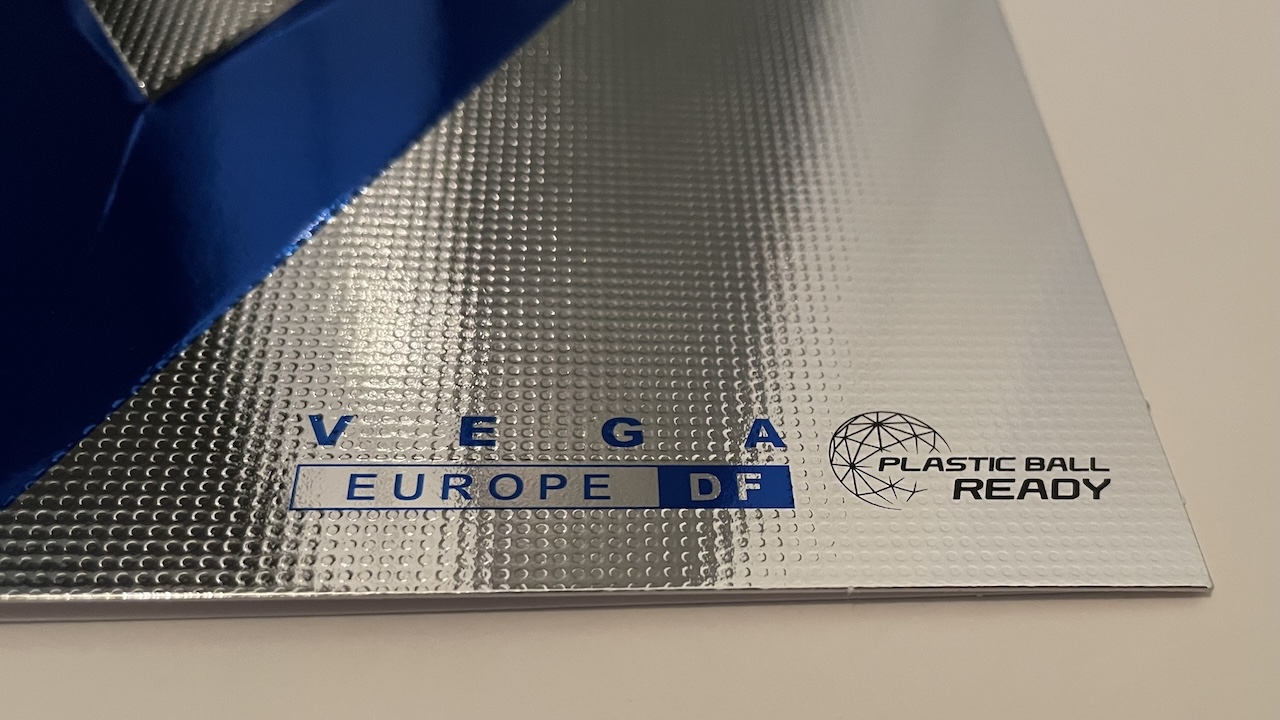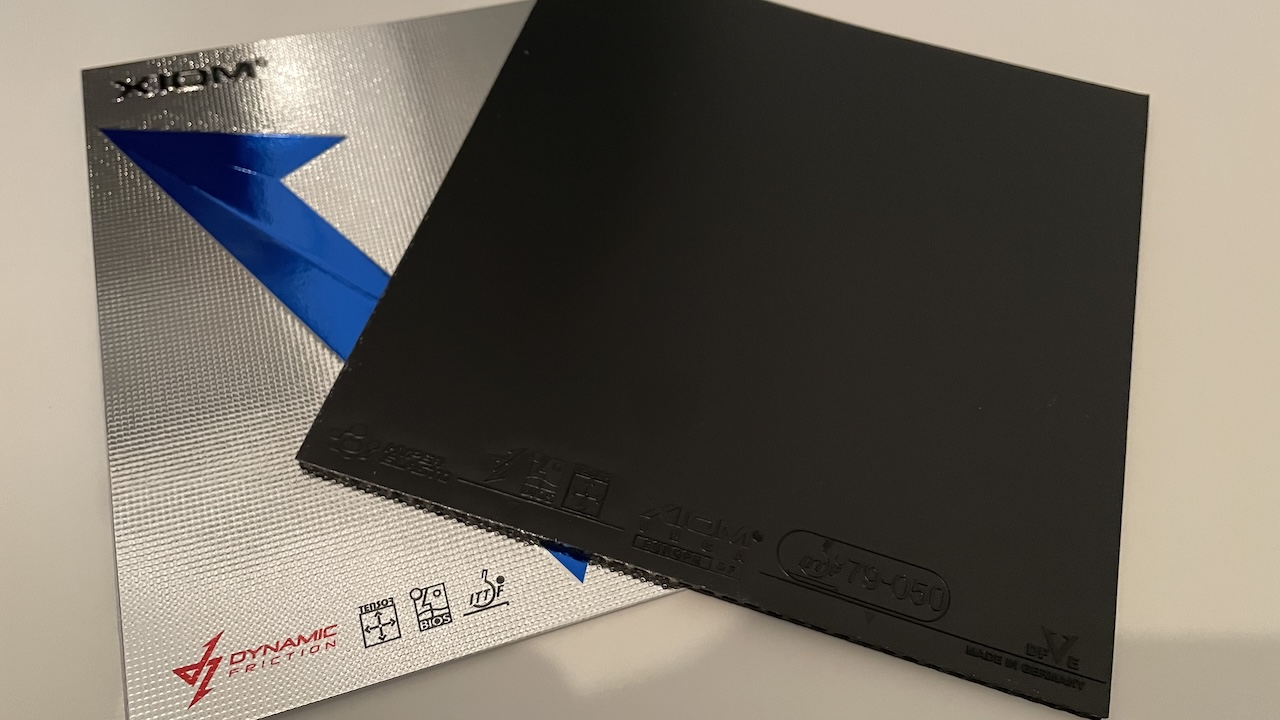Xiom Vega Europe DF Review | Table Tennis Rubber Test
This rubber is one of Xiom's most popular rubbers they sell and the new DF version comes with a set of upgrades and is optimized for the plastic ball. But is it any good?
The Vega Europe DF rubber is part of Xiom's Vega lineup which consists mostly of products for beginner to intermediate players. More advanced players might give the top tier versions, Vega X and Vega Pro a chance, but especially professional players would probably go for a way faster rubber like the Omega series. The Vega Europe however has always been targeted at players who know the fundamental basics of table tennis and are somewhat confident executing simple strokes like drives, pushes and controlled topspin shots. So let's have a look if the new DF version can follow the legacy of the Xiom Vega Europe or if players should stick with the predecessor.
Is Xiom Vega Europe DF better than the regular Vega Europe?
Before we answer this question, we'll first have a look at the packaging and the rubber itself. It comes with the classic silver/shiny box like all products from the Vega series. On the bottom right corner we can already identify the first differences compared to the regular Vega Europe because the DF is explicitly marketed as being "plastic ball ready". Now, in the modern era of table tennis, this should go without saying but it's good that Xiom seems to have made some adjustment to compensate for the loss of spin back then when the table tennis world migrated from celluloid to balls made of plastic.

Xiom achieves this improved spin mostly through 3 things: A grippier topsheet, a more coarse-pored sponge and an overall softer rubber compared to its predecessor. The sponge comes in Xiom's trademark black color (which looks very cool by the way) and is very soft at only 37.5° hardness on the ESN scale. This makes the Vega Europe DF softer than other comparable products like for example Nittaku Factive, Andro GTT 45 or Donic Desto F2 which can all be categorized as being great options for intermediate players looking for an upgrade from classic rubbers like Yasaka Mark V.

Looking at this extreme softness, we did not expect a fast pace from the Xiom Europe Vega DF but during our tests we've been greatly surprised that this rubber is not noticeably slower than the already mentioned competing producs from Nittaku, Andro and Donic but the increased softness allowed us to control the ball very well and place it exactly where we wanted it to land and also the spin was among the best of the 4 products.
Looking at the topsheet, we immediately noticed that it is very grippy – a lot grippier than the previous version, the standard Vega Europe (without "DF"). The pimples were not visible in our tested black version of the rubber. Overall, we have been very impressed by the build quality and the way the Vega Europe DF plays. It is certainly not comparable with top end products like the Omega, Tenergy or Fastarc series but it is decently fast enough for most intermediate players who have at least 1-2 years of experience playing table tennis in a club. The sponge's unusual softness might feel weird at first but don't let yourself fooled by that. The spin generation is plenty strong enough and the grip of the topsheet is superb.
If you are coming from a classic, non-tensor rubber and you like soft sponges, then definitely give the Xiom Vega Europe DF a chance. It's an amazing rubber to upgrade to and it works well with most allround blades. For example, we do recommend to use the Vega Europe DF with for example Donic Appelgren Allplay blade or if you want something a little bit faster, you can also opt for the ever so popular Yasaka Sweden Extra which is also an all-wood blade (like the Donic Appelgren Allplay) but has a bit more speed built into it. If you're interested in a low-cost blade which doesn't break the bank, have a look at our article Best Budget Blades.
If you are currently using the original, non-DF version of the Xiom Vega Europe and wondering if you should switch to the DF version, then we would definitely say go for it if you enjoyed the playing characteristics of the original. The DF version if a tiny bit faster, spinnier, grippier but also softer. The only downside is that it costs more at about $40 while the older, non-DF version can sometimes be bought below $30 if it is on sale.
 Spin Testers
Spin Testers

